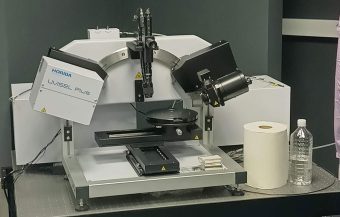
BioSens Institute, Institute for Research and Development of Information Technologies in Biosystems, is a pioneer in the digital transformation of agriculture in Serbia. Investigating the scientific and technological boundaries of the innovative application of IT in agriculture, the Institute aims to provide the domestic and global agricultural sectors with superior digital solutions to achieve higher yields with less investment.
We spoke with Oskar Marko, PhD, Assistant Director for Innovation and Industrial Collaboration at the BioSens Institute, about the advantages of the AgroSens platform, the functioning of the Digital Village in Mokrin, how the dim.rs portal affects the improvement of the environment, how digitization can increase income, why is Institute important for young researchers and whether they participate in projects funded by the European Union.
Q: Could you tell us how the AgroSens platform, i.e. the digital service for farmers, operates?
A: AgroSens is a platform developed to provide farmers with quick and straightforward access to data, but it also provides the community with the top scientific results accomplished by the BioSens Institute in artificial intelligence, satellite image processing, and sensor network development. The platform includes many modules, including weather forecasts, processed satellite images, a digital field book, and more. Based on this data, it is possible to gain insight into the state of the crop and make decisions based on facts on the ground, which ensures high yields and reduces risks.
IN FOCUS:
- Encouraging Competitiveness in Buying and Selling Electricity
- Investing In Sustainable Management of RES
- Maribor – Circular Economy Implementation Hub
Q: What was the idea behind establishing the Digital Village in Mokrin? How does the project work in practice?
A: The central idea of the Digital Village was to take the entire arsenal of digital technologies available to us and use the example of a village to show their impact on production and the community as a whole. As part of this project, lectures were given to farmers; fields were scanned with drones, sensors and weather stations were installed, and everything was implemented with the support of experienced agronomists. Local farmers have demonstrated a high degree of professionalism, interest and openness and judging by the feedback, digital technologies have helped them to gain insight into the condition of crops and to determine the right moment for the application of agrotechnical operations – the application of pesticides, fertilizers and more – which, in turn, has helped them to optimize the use of inputs and ensure high yields.
Q: How would you rate the progress of digitalization in agriculture? How much can digital transformation increase revenues and help farmers to achieve higher yields with less investment?
A: One example of progress in digitalization is the AgroSens platform, which over 20,000 farmers use. If we add up the total area managed by these farmers, it comes up to a quarter of the total arable land in Serbia. This is a validation that our farmers have recognized the importance of digital transformation and that we can expect an increasing impact of modern technologies in agriculture in the future. Also, irrigation optimization systems and many other sensors, such as Plant-O-Meter and soil moisture sensors, are patented and licensed and are available in the market. Solutions for agricultural production are not the only solutions we have. Agricultural producers are automatically evaluated thanks to the project we are implementing with the World Bank. They are granted loans much more easily, which, in turn, facilitates their greater access to finance to start production and ensures higher yields and profits.
Interview by Mirjana Vujadinović Tomevski
Read the whole interview in the new issue of the Energy portal Magazine AGROSOLAR ENERGY AND RES.

